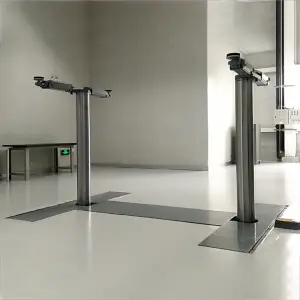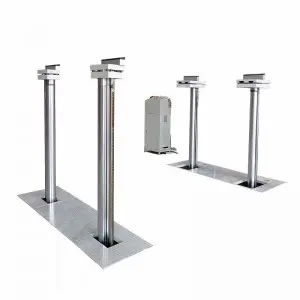****

Exploring the Geometry and Applications of Cylinders: Understanding Their Properties, Real-life Uses, and Importance in Various Fields
Cylinders are fascinating geometric shapes that play a crucial role in a variety of fields, including engineering, architecture, and everyday life. With their defining characteristics of two parallel circular bases and a curved surface connecting them, cylinders are both simple in form and complex in application. This article delves into the properties of cylinders, their real-world uses, and their importance across various disciplines.
To begin with, let’s define what a cylinder is. In geometry, a cylinder is a three-dimensional solid that consists of two identical circles (the bases) aligned parallel to one another, with a lateral surface connecting the edges of these circular bases. The most common type of cylinder is the right circular cylinder, where the axis—an imaginary line that runs through the center of the two bases—is perpendicular to the bases. Another type is the oblique cylinder, where the sides lean over the base circles, not forming a right angle with the axis. Each type of cylinder has distinct properties that can be studied mathematically.
One of the key properties of a cylinder is its volume. The volume \( V \) of a right circular cylinder can be computed using the formula:
\[ V = \pi r^2 h \]

Exploring the Geometry and Applications of Cylinders: Understanding Their Properties, Real-life Uses, and Importance in Various Fields
where \( r \) is the radius of the base, \( h \) is the height of the cylinder, and \( \pi \) is a constant approximately equal to 3.14159. The surface area \( A \) of a cylinder is also significant and can be calculated using the formula:
\[ A = 2 \pi r (r + h) \]

Exploring the Geometry and Applications of Cylinders: Understanding Their Properties, Real-life Uses, and Importance in Various Fields
Understanding the volume and surface area calculations is essential in numerous applications, particularly in engineering and manufacturing.
Cylinders are ubiquitous in the physical world and can be found in various forms. For example, in everyday life, many objects can be categorized as cylinders, from beverage cans to pipes, and from pillars to storage tanks. The manufacturing industry extensively utilizes cylindrical shapes for various components and machinery, reflecting their strength, stability, and ease of use.
In architecture, cylinders are utilized for both functional and aesthetic purposes. Columns in buildings often take the form of cylindrical structures, providing support while creating a visually pleasing design. Stability is a vital factor in construction, and the cylinder’s inherent strength allows it to bear significant weight, making it an optimal choice for architectural designs.
In the realm of mechanical engineering, cylinders form the basis for various mechanisms. Hydraulic cylinders, for example, are crucial components in heavy machinery and equipment. They convert hydraulic fluid pressure into mechanical energy, facilitating movement and control in machines ranging from excavators to car lifts. This application of cylinders highlights their versatility and critical importance in industrial environments.
Additionally, in the field of physics, cylinders are used in various experiments and theoretical applications. The study of rotational motion often involves cylindrical objects, where the moment of inertia—a measure of an object’s resistance to angular acceleration—is analyzed. Understanding these principles is important for applications ranging from vehicle dynamics to aerospace engineering.
In educational contexts, the study of cylinders is a fundamental part of geometry and mathematics. Students learn about the properties and applications of cylinders to develop a solid understanding of three-dimensional shapes. This knowledge lays the groundwork for further exploration into more complex geometric concepts and prepares students for advanced studies in fields such as engineering and architecture.
Furthermore, cylinders find their applications in technology, especially in the design of tools and devices. For instance, a cylindrical battery design ensures efficient use of space while maintaining a consistent energy output. Similarly, in the world of packaging, cylindrical containers are often employed for liquids as they are less prone to leaking compared to their rectangular counterparts due to their uniform stress distribution.
In conclusion, cylinders are more than just geometric shapes; they represent an essential concept in various fields, ranging from education and architecture to engineering and manufacturing. Understanding their properties and applications allows us to appreciate the importance of cylinders in both theoretical studies and practical uses. Whether you encounter them as everyday objects or complex engineering solutions, cylinders continue to be integral to the world around us.quickjack portable car lift


